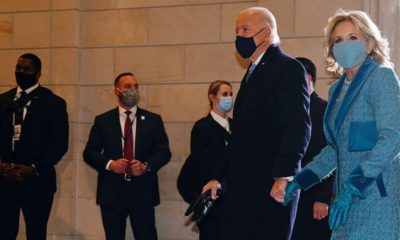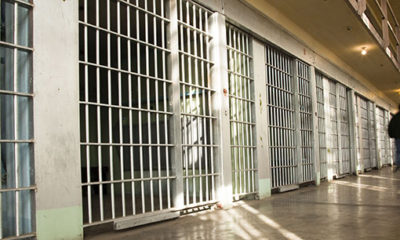Published
5 years agoon

As oft-noted in this space, those in California’s state government — governors, legislators and agency directors — have an unfortunate habit of starting programs and projects that are never fully implemented.
These governmental orphans fall roughly into two categories, those that have some valid rationale and those that don’t.

For decades, a certain segment of California’s population has swooned over the notion of an uber-fast north-south rail system, ala those in Japan, China and Europe. However, advocates never provided a logical rationale, given that traveling up and down California is relatively easy while movement within urban areas is our toughest transportation problem.
[rlic_related_post_one]
Eleven years ago, then-Gov. Arnold Schwarzenegger and other advocates persuaded voters to pass a $9.95 billion bond issue, assuring them that the system could be built for about $40 billion, would attract outside investors, and be operationally self-supporting.
None of that has come to pass. The state’s High-Speed Rail Authority is now more or less building about 100 miles of track in the San Joaquin Valley, using money from bonds and $3.5 billion in federal grants.
In January, a newly inaugurated Gov. Gavin Newsom more or less abandoned the notion of a statewide system, citing lack of money, and then more or less backtracked and said he wanted to slightly lengthen and complete the San Joaquin Valley section.
President Donald Trump’s administration, always on the prowl for ways to ding blue California, then held up nearly $1 billion in grant funds and demanded that money already sent, and partially spent, be returned because the underlying contract had been violated.
Defying federal officials and its own peer review committee, the bullet train board this month decided to solicit bids from three firms to electrify the track now under construction and build a maintenance garage to service the system.


California Pins Vaccine Hopes on Biden Administration


Walters: After COVID-19, Drought Threat Still Looms


Fierce California Winds Fan Fires, Topple Trees and Trucks


Monarch Butterfly Population Moves Closer to Extinction


Newsom Sets New Tone for California, White House Partnership


California Guard Pleads Guilty to Lies in Inmate’s Death





Martin Querin
December 27, 2019 at 5:01 pm
With all due respect to Mr. Walters, I would like to provide a two-fold rationale for a functional High Speed Rail. The first is aimed directly at the congestion issue in the major metro regions mentioned as our biggest problem in the article. If people were able to live at a lower cost of living and still access the job markets in the two major metro regions, without having to drive a car they wouldn’t need to commute from Bakersfield or Modesto by car to LA and SF. That could reduce commute traffic in the major metro regions, the average standard of living and improve air quality.
Secondly, the central portion of the State is a giant fiscal sucking sound. While the Central Valley consumes most of the water, producing most of the food, it also produces less than 10% of the States GDP. Agriculture and the communities that support it require massive subsidies because their average income and property value, the two things that drive State and local finances are the lowest in the State. Providing access to the two major job poles in the bipolar State (pardon the pun) from the impoverished Center of the State will improve the economies of these regions, which in turn will improve State revenues and reduce pressure to increase taxes; it will allow these regions to be more self-supporting reducing the need for subsidies and increase average income and property values, which would in turn increase tax revenues.
If you want more money to support non-revenue generating social programs and to concurrently reduce demand on these programs, you might want to think through the consequences of a well designed and thought out HSR. The unfortunate truth is, the HSR isn’t a bad project, it is a poorly conceived one because in this State we have to cowtow to every micro-constituency and instead of building a straight rail through miles of greenfield with only a few stops and requiring the Counties to develop their own connectivity projects. We build a rail following a rail system that needed stops every few miles to load up coal and water for steam engines. We build a rail system to connect north and south and at the same time expand the freeway to 6-lanes for the entire stretch. We avoid addressing the fact that freight pays and passengers don’t to avoid a fight with the railroads and truckers.
So in that, the article was spot on; unsophisticated and parochial California voters get what they asked for. Generally speaking an abomination conceived by compromised decision making and given birth by well-meaning bureaucrats who will not point out that piss poor planning was the father, but rather blame the failed program on “unintended consequences and “mitigating circumstances”; it’s the equivalent of acting surprised, when you didn’t use contraception.